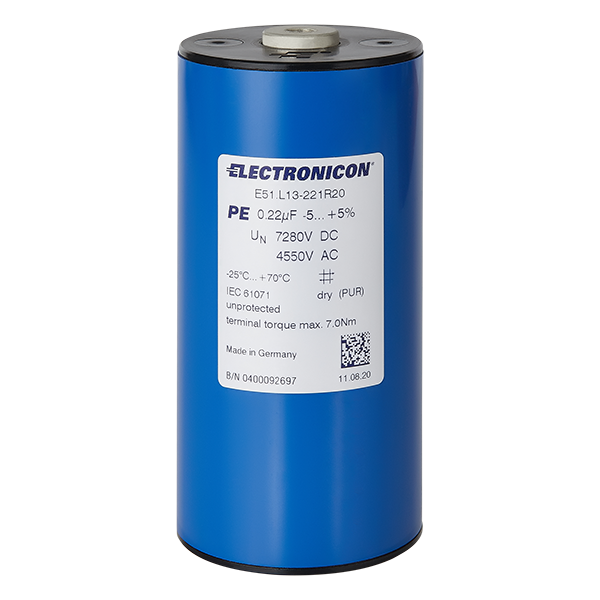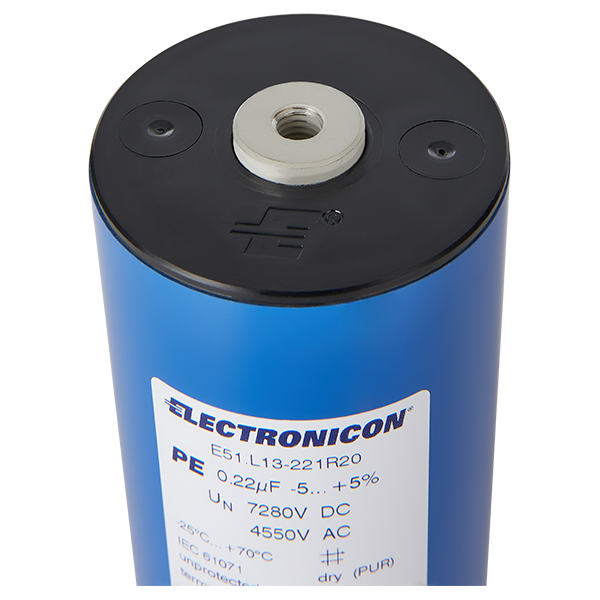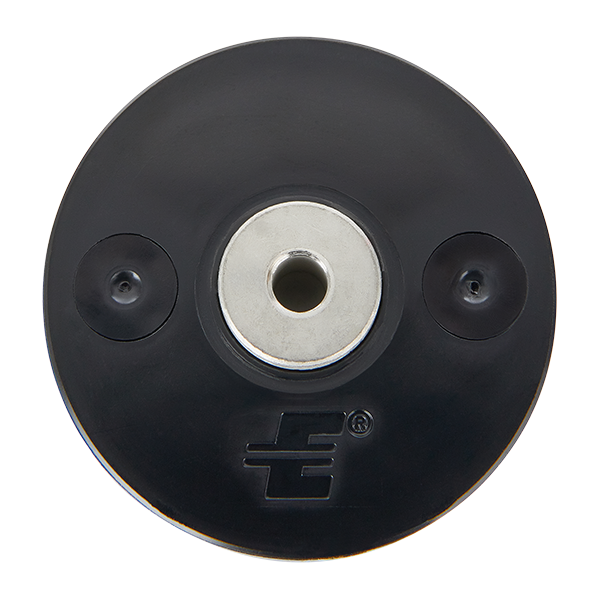E51
We have come up with a simple but effective – and very reliable – solution for high-voltage applications: even in the 50kV range, we can do without expensive ceramic insulators.
Product data base
Enter a known article number, in full or in parts, in the field "Specific part number" and start your search. Alternatively, you can search by general or pre-filtered technical criteria in line 2.
Please note that, for technical reasons, our database can only be updated once a day. Therefore, the information about our stock quantities needs to be confirmed by our sales teams. Occasionally it may happen that the goods have been sold in the meantime.
High voltage, low inductance, AND longest possible operation without failures? Here we go.
In power electronics in general, and especially in low inductance buffer circuits with higher voltages as well as in discharge circuits, the call for capacitors with low inductance tends to pose problems: traditional high-voltage capacitors are filled with oil, and the generous bushings required for clearance and creepage as well as internal safety mechanisms add substantially to the self-inductance of the capacitor.
Based on decades of proprietary experience in metallizing capacitor films, ELECTRONICON has created a range of high voltage capacitors in self-healing technology, using the opportunities of special metallizing patterns. Despite the high voltage rating, our E51 range is manufactured in dry technology and without expensive bushings. Inside the can made of self-extinguishing plastic, the capacitor element is enclosed in solid resin (PUR). Connection is made through robust flat terminals with internal thread.
Along with their very good ratio of capacitance to volume, these capacitors do also have high pulse strength and very good self-healing characteristics without loss of capacitance. For the sake of optimised self-inductance, the E51s are made without safety mechanism; by clever internal design they can be laid out and rated in such manner that partial dielectric discharges and consequential risk of failures in the customer?s application are reduced to a minimum.


